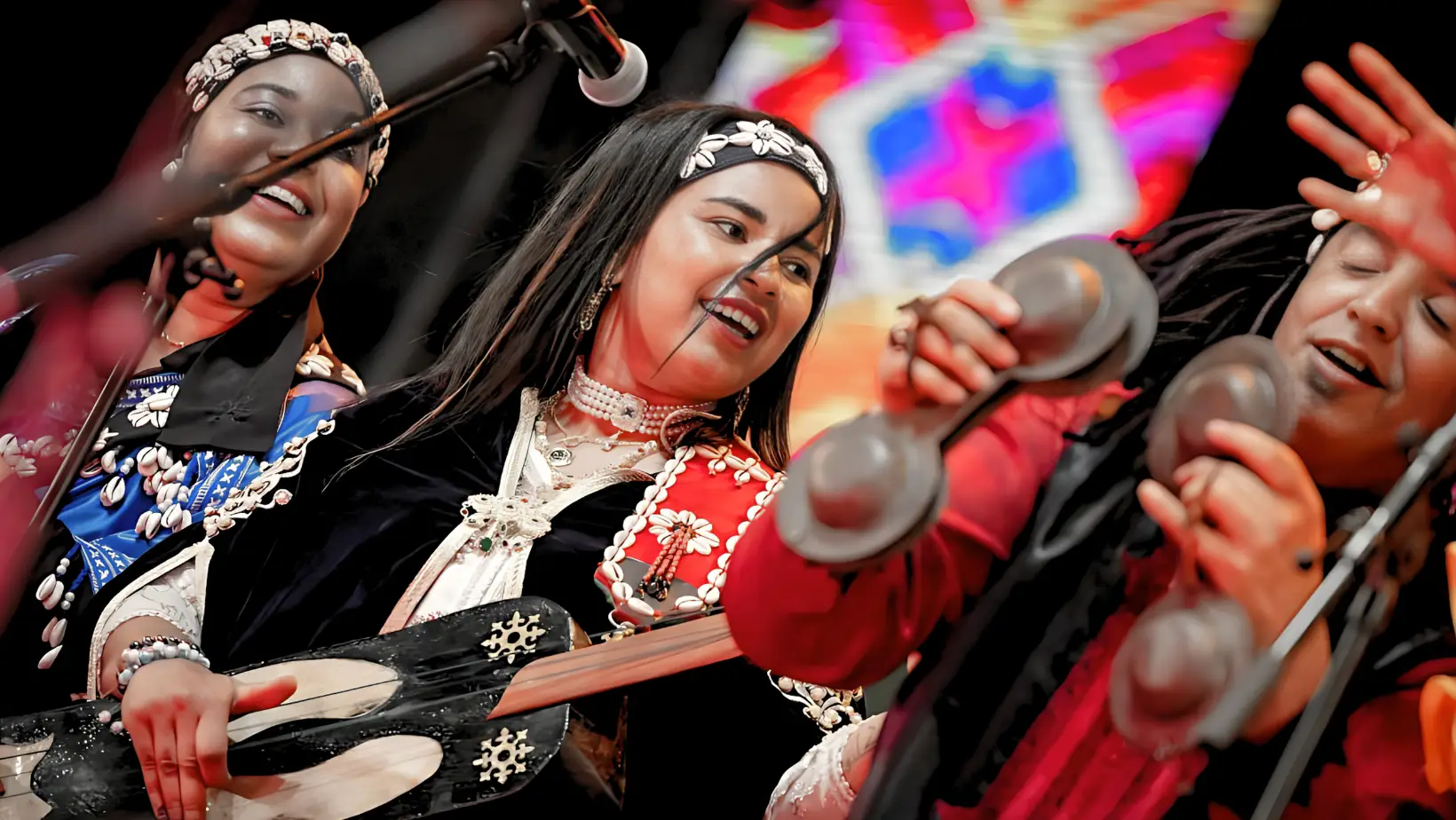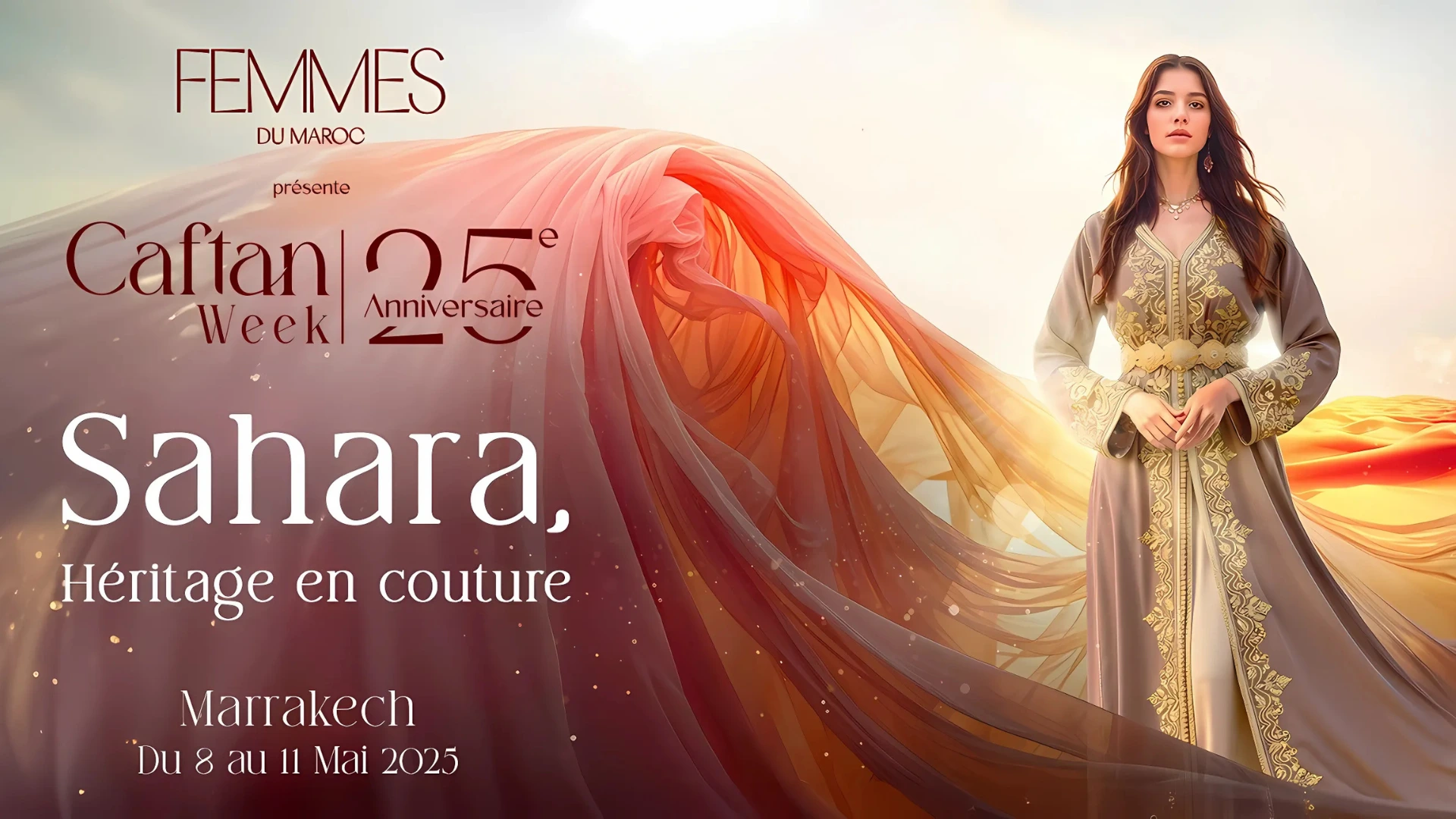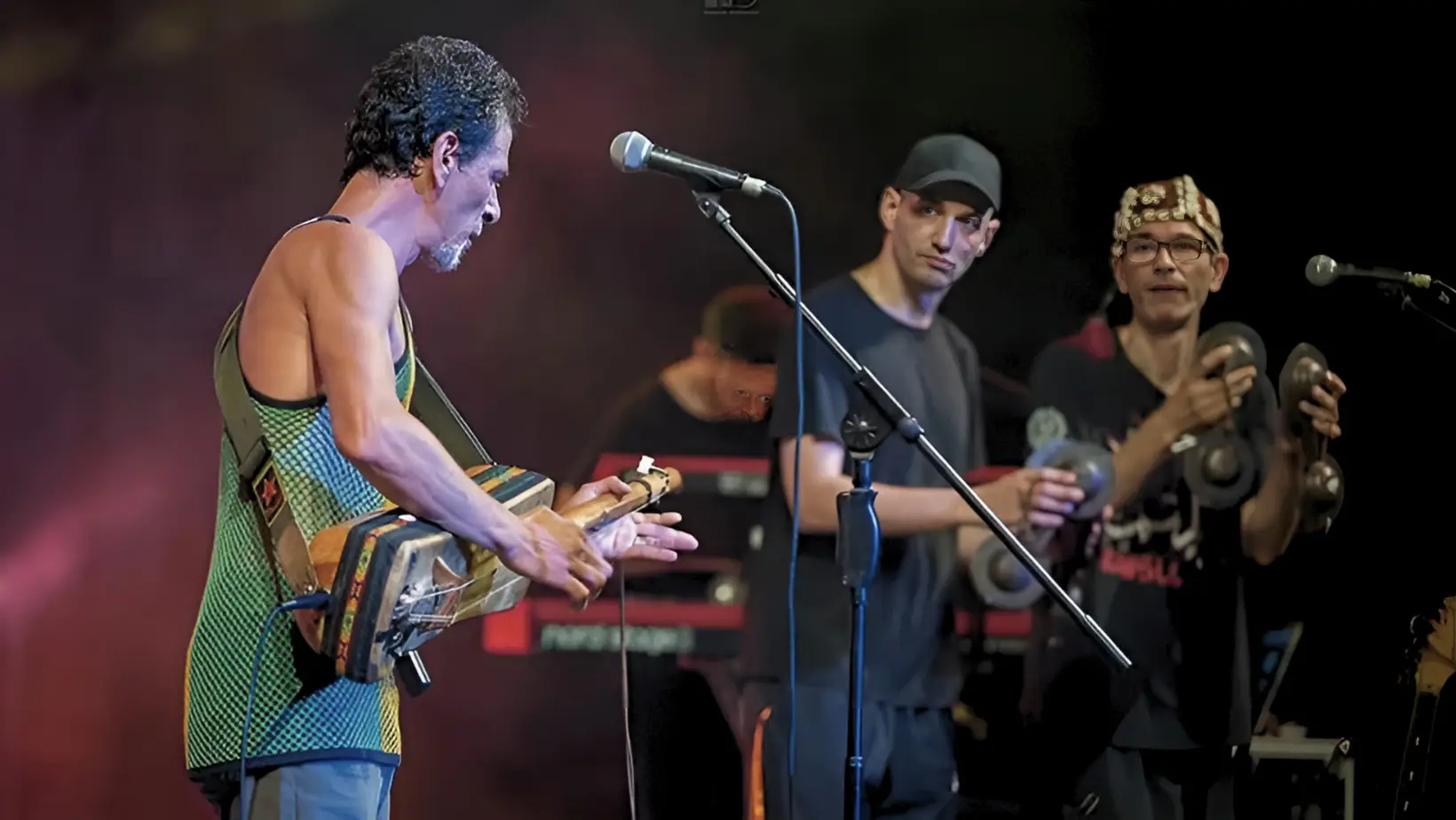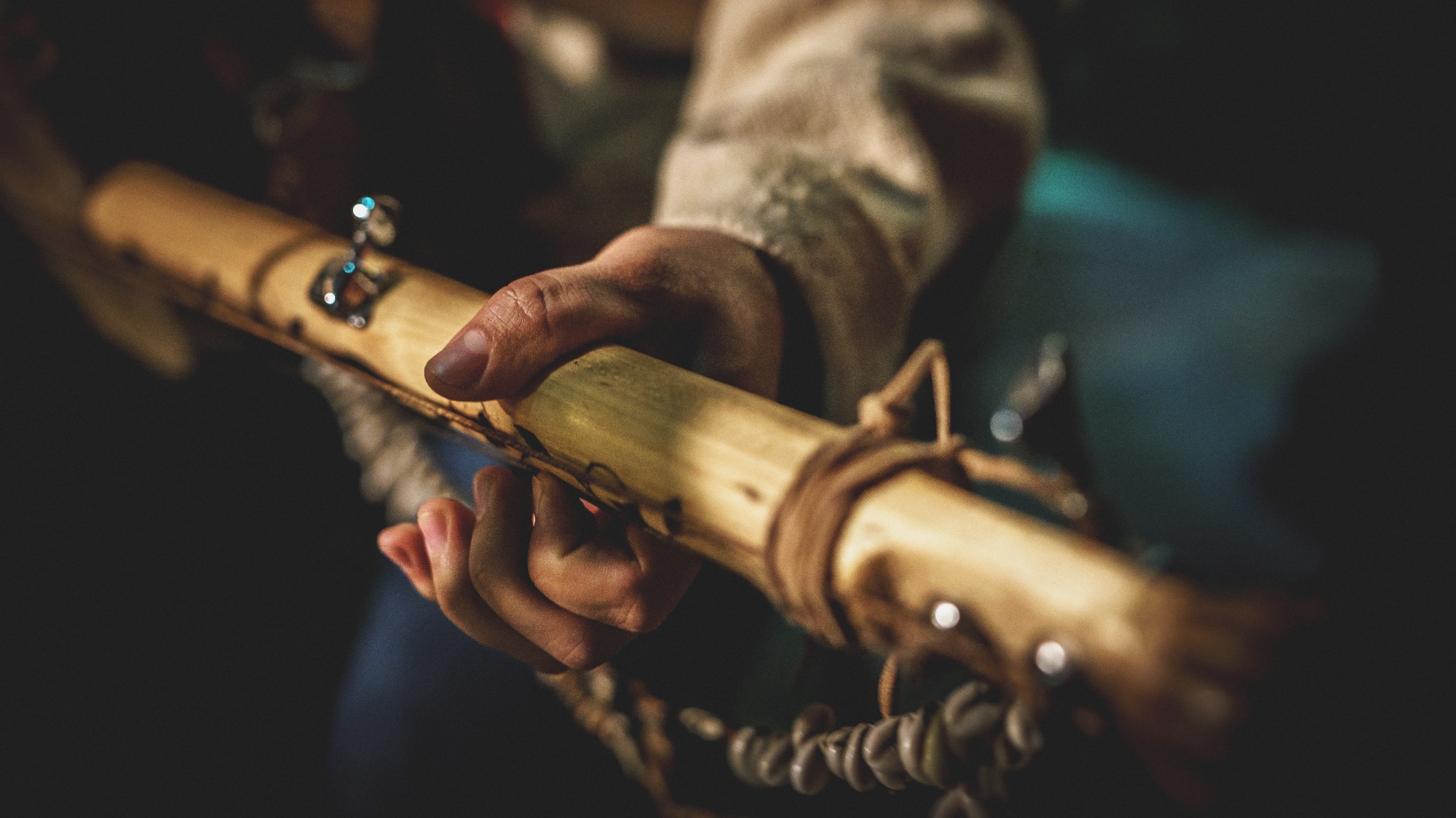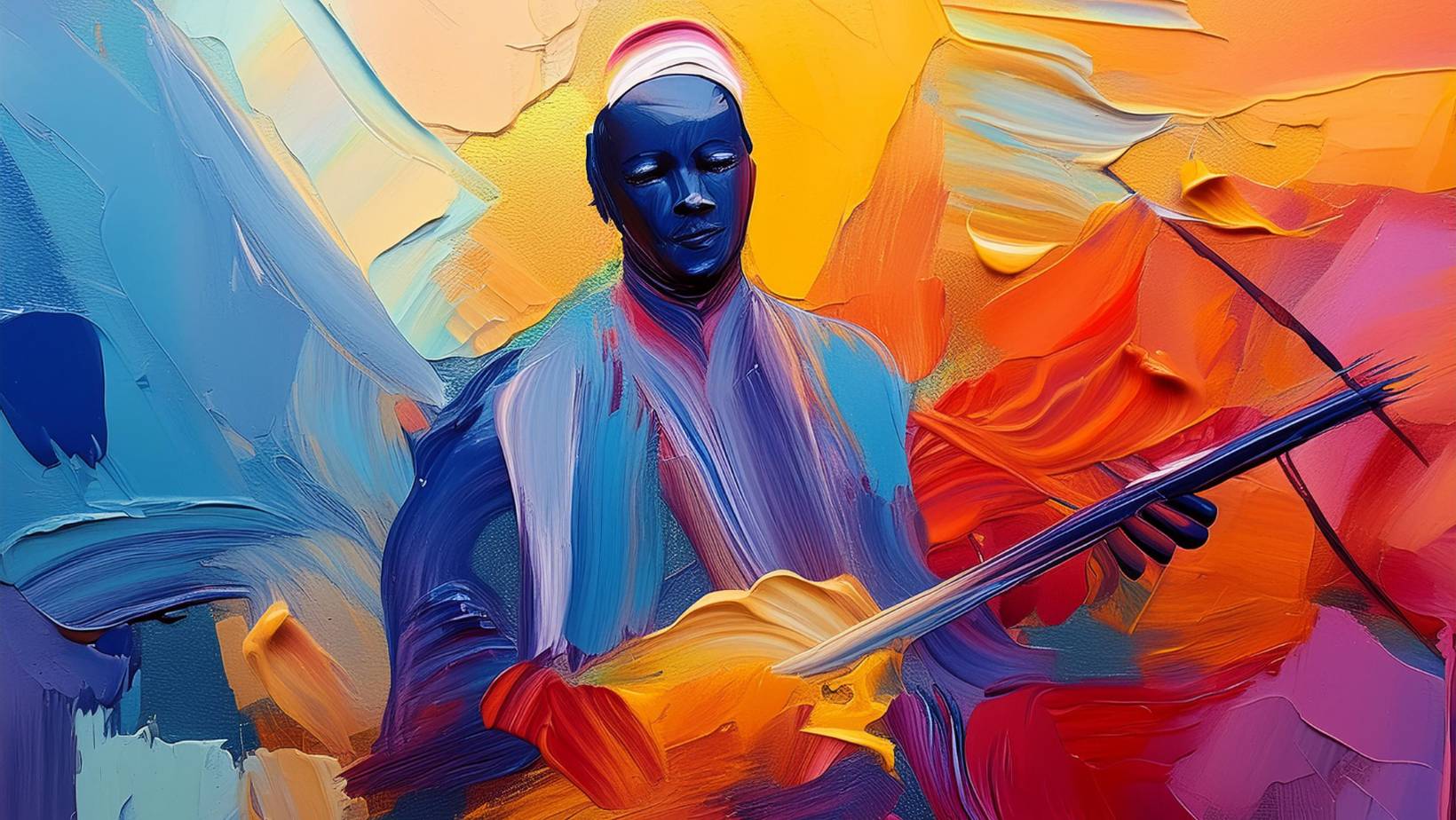Gnawa music, with its deep roots in West African spirituality and Moroccan culture, has historically been a male-dominated field. Traditionally, the role of the Maâlem, or master musician, has been reserved for men, who lead the spiritual ceremonies known as “Lila” or “Derdeba.” However, as societal norms evolve, the role of women in Gnawa culture is undergoing a significant transformation. This article explores the contributions of women within this mystical tradition, highlighting the changes and challenges they face.
Historical Context and Traditional Roles
Historically, women in Gnawa culture have been participants rather than leaders, often involved in the preparation of ceremonies and as active members of the audience, engaging in the spiritual experience. Women’s involvement was primarily behind the scenes, supporting the male Maâlems and ensuring the smooth execution of the rituals.
Breaking Barriers: Women as Maâlems
The landscape began to change as more women not only participated in but also led Gnawa music performances. A pioneering figure in this shift is Asmâa Hamzaoui, who has gained international recognition as one of the few female Maâlems. Hamzaoui’s emergence on the scene has not only challenged the traditional gender roles within Gnawa music but has also inspired a new generation of female musicians to learn and master the sintir (a three-stringed lute that is central to Gnawa music).
The presence of women like Hamzaoui in a leading role is revolutionary in the context of Gnawa music. Their acceptance as Maâlems represents a broader cultural shift towards gender equality in Morocco and reflects changing attitudes towards women’s roles in both music and society.
Challenges Faced by Women in Gnawa Culture
Despite these advancements, female Gnawa musicians face significant challenges. Cultural purists often question the authenticity and legitimacy of female Maâlems, arguing that they deviate from tradition. Women in this field also encounter societal stereotypes and may face opposition from their communities, where the idea of women performing publicly and leading ceremonies can still be controversial.
Moreover, the journey to becoming a Maâlem is arduous, requiring years of apprenticeship and mastery of complex rhythms and spiritual practices. For women, this path is complicated by fewer opportunities for mentorship, as most established Maâlems are men.
The Role of Festivals and Global Platforms
International music festivals and global platforms have played a crucial role in amplifying the voices of female Gnawa musicians. These venues provide a space where women can showcase their talents on an equal footing with men, gaining both visibility and credibility. Festivals like the Gnaoua World Music Festival in Essaouira have been instrumental in promoting female artists, helping to normalize their presence in the field and inspire young girls in Morocco and beyond.
The Future of Women in Gnawa Culture
The increasing visibility of women in Gnawa music is a sign of progressive change within the culture. As more women rise to prominence, they contribute not only to the genre’s richness but also to a broader dialogue about gender roles in Moroccan society. The path forward involves continued advocacy for equality, education, and support for women in the arts, ensuring that the next generation of female Gnawa musicians can thrive without barriers.
In conclusion, while the road may be fraught with challenges, the contributions and growing influence of women in Gnawa culture are undeniable. By redefining traditional roles and challenging societal norms, these women are not only preserving but also evolving the rich heritage of Gnawa music. Their perseverance and innovation pave the way for a more inclusive and dynamic future for the tradition.
